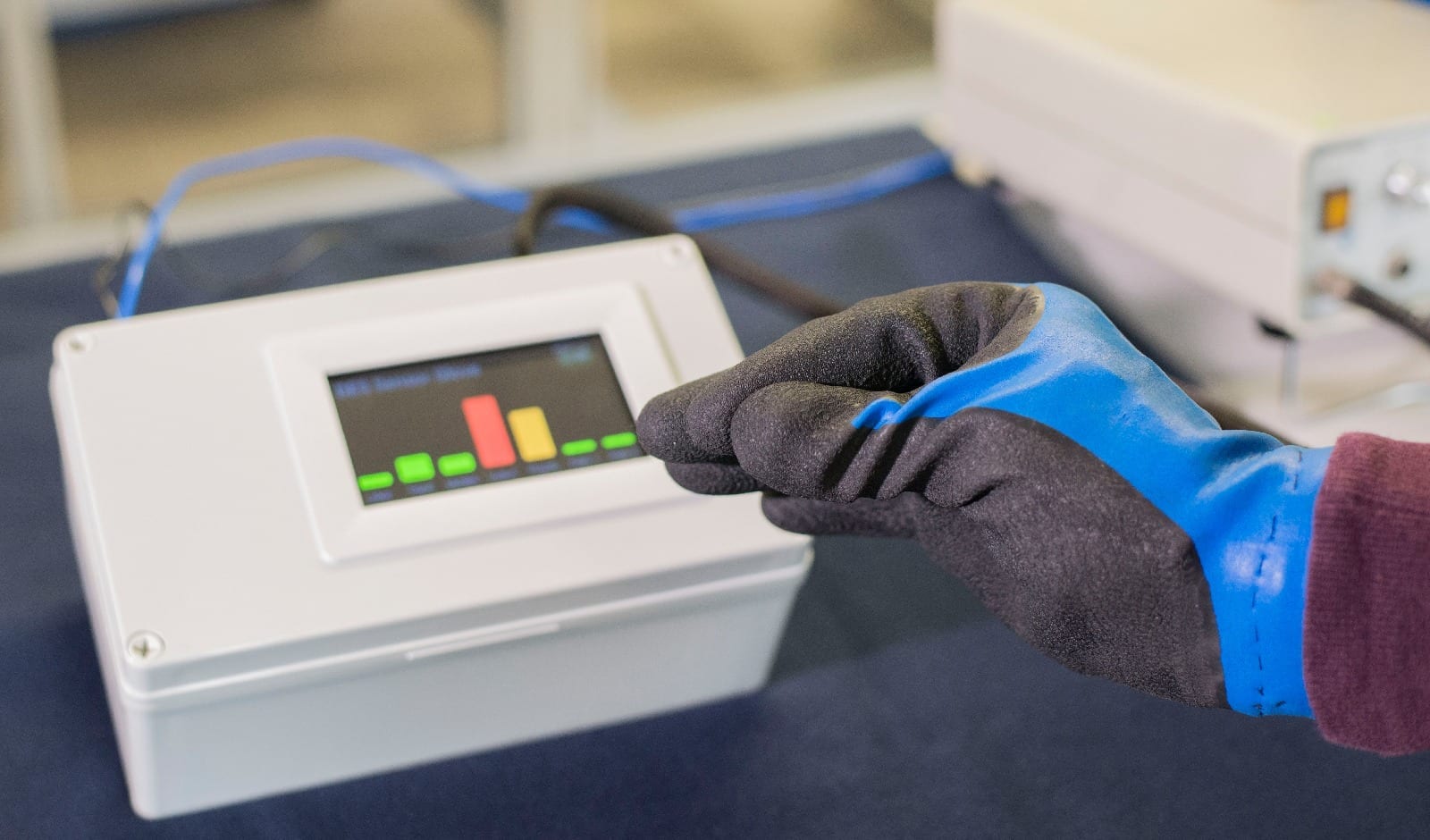
The supersensitive device holds promise for medical imaging and quantum networks
Physicists have found a way to detect faint radio waves and convert them directly into signals that can be transmitted by fiber optics. The discovery could improve the sensitivity of detectors used in magnetic resonance imaging and radio astronomy, and help to connect future quantum computers into a network.
Radio-wave receivers use antennas to pick up radiation. The incoming waves resonate with the antenna and induce a changing electrical signal, which is then transmitted down a wire. Faint radio signals must be boosted by electrical amplifiers such as transistors, which introduce noise — extra fluctuations that, when amplified, can swamp the signal. The amount of noise present sets the limit of the detector’s sensitivity: The best amplifiers must be super-cooled to reduce the thermal vibrations that cause noise.
A team led by physicist Eugene Polzik at the University of Copenhagen’s Niels Bohr Institute has now created a detector that can turn radio signals into optical signals at room temperature, without the need to go through amplification. The device is already as sensitive as state-of-the-art electronics, says Polzik.
Up and down
The key to the approach, described in Nature, is a membrane of silicon nitride less than 200 nanometers thick, coated with aluminium and suspended over a gold plate. When an antenna picks up a radio signal, it creates an oscillating electrical signal in the circuit. This produces a voltage flicking back and forth between the aluminium and the gold, and the resulting attracting and repelling electrostatic forces cause the membrane to move in tune with the wave.
The device detects this motion by bouncing a laser off the membrane and measuring how the motion shifts the laser’s light waves, explains co-author Albert Schliesser, also a physicist at the Niels Bohr Institute. This laser signal can be read out, and its accuracy is limited only by quantum fluctuations of the laser light, he says. Tests show that noise from the membrane is tiny: even at room temperature, the membrane adds 100 times less noise than super-cooled electronic amplifiers, says Schliesser.
Previous experiments have succeeded in converting radio-frequency signals into mechanical vibrations, and in turning mechanical vibrations into light signals, but Schliesser and his colleagues have combined both into a single system.
The Latest on: Supersensitive sensor
[google_news title=”” keyword=”Supersensitive sensor” num_posts=”10″ blurb_length=”0″ show_thumb=”left”]
via Google News
The Latest on: Supersensitive sensor
- Forget megapixels! This 36-pixel camera can rock space scienceon May 2, 2024 at 4:39 am
While NASA’s James Webb Space Telescope keeps surprising us with its 122-megapixel cosmic portraits, another groundbreaking mission thrives on a seemingly inferior camera: XRISM’s Resolve, with a mere ...
- How do fingerprint sensors work?on April 24, 2024 at 5:00 pm
Despite our best efforts, locks are susceptible to picking and passwords to hacking. So, how should we protect our stuff? The answer might lie in biometrics. Once a feature of Sci-fi cinema ...
- Real-time detection of infectious disease viruses by searching for molecular fingerprintingon April 15, 2024 at 5:00 pm
Researchers develop breakthrough technology for wide-ranging and ultra-sensitive active nano-spectral sensor, surpassing current limitations. A research team consisting of Professor Kyoung-Duck ...
- The 10 Very Best Electric Toothbrusheson April 15, 2024 at 9:54 am
A pressure sensor shouldn’t make or break your decision when deciding on what brush to go with, but Huang does think it’s a good idea for people switching from a manual brushes to an electric ...
- The Best Corsair Gaming Miceon April 9, 2024 at 6:59 am
This sensor pairs with smooth PTFE feet and the ... built with the Corsair Quickstrike switches that are super sensitive and have essentially imperceptible lag. With a wide variety of gaming ...
- Generation of lossy mode resonances using perovskite nanofilmson December 21, 2023 at 7:25 am
These devices act like super-sensitive detectors that can pick up ... Imagine having a tiny LMR sensor in your smartphone that can tell you if the air quality is safe or if there are harmful ...
- Filming treehoppers in Ecuadoron November 19, 2023 at 11:09 am
We brought specialised equipment to tap into this rich world. We clipped a super-sensitive sensor onto the branch, which picked up the vibrations. An amplifier attached to a recording device ...
- Quantum Atomic Interferometer For Precision Motion Sensingon December 28, 2021 at 12:23 am
Luckily with a multi-sensor fusion system ... it can be used as a super-sensitive gravimeter which would be useful for ground surveying for sectors such as oil and mineral exploration as well ...
- The 7 Best Stud Finders for Seeing Through Walls and Tackling Any Jobon June 24, 2021 at 12:36 pm
Most electronic stud finders work by sending out a signal from a sensor inside, then reading the signal that bounces back. When the signal changes, the stud finder beeps or flashes to let you know ...
- California Kids #supersensitive Tinted Lotion SPF 30+ Sunscreenon August 6, 2020 at 9:37 pm
The California Kids #supersensitive Tinted Lotion SPF 30+ is part of the Sunscreens test program at Consumer Reports. In our lab tests, Sunscreens models like the #supersensitive Tinted Lotion SPF ...
via Bing News










